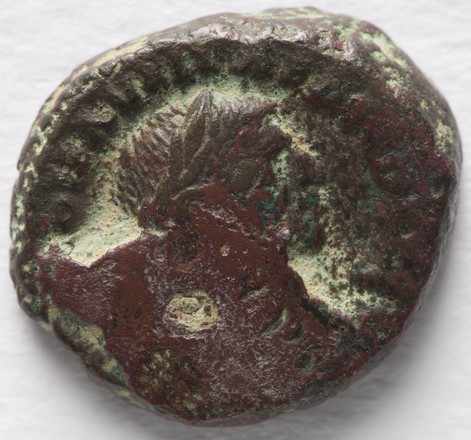
Roman Egyptian coin of the reign of the Emperor Aurelianus found at Lone Pine in 1915
Bronze Billon
tetradrachm of Aurelian, Alexandria, 273–274 AD
R 29
Presented by Sergeant WF Adamson
Imagine his surprise when Sergeant WF Adamson of the Australian 1st Light Horse Regiment came across this ancient coin while digging trenches at Lone Pine (Gallipoli) in August 1915 – evidence of the multiple layers of history on this site. This coin was struck at Alexandria in the reign of the Roman Emperor Aurelianus, AD 270–275.


 Back to list
Back to list